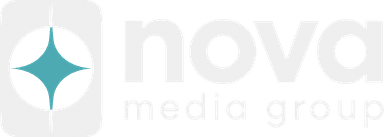Agile vs Traditional PM Software: Which Fits Your Business Model?
Your project just failed. Again. The timeline stretched three months beyond deadline, the budget ballooned by 40%, and team morale hit rock bottom. Sound familiar? The culprit might not be your team or even your processes, but rather a fundamental mismatch between your project management software and your actual business workflow.
Choosing between agile and traditional project management tools isn't just about picking the shiniest software with the most features. It's about understanding your organization's DNA, project complexity, and team dynamics, then selecting tools that amplify your strengths rather than forcing you into an uncomfortable methodology.
Understanding the Fundamental Divide
Traditional waterfall methodology treats projects as linear journeys with distinct phases: requirements, design, implementation, testing, and deployment. Each phase must complete before the next begins, creating a predictable but rigid structure. In contrast, agile project management embraces iterative development, continuous feedback, and adaptive planning through sprints and scrums.
The software supporting each approach reflects these philosophical differences. Traditional PM tools excel at Gantt charts, resource allocation, and long-term planning. Agile platforms prioritize sprint planning, backlog management, and real-time collaboration.
The Agile Champions: Built for Speed and Flexibility
Jira
Atlassian's powerhouse remains the gold standard for agile teams, particularly in software development. Starting at $7.75 per user monthly for teams up to 10 users, Jira offers sophisticated sprint planning, customizable workflows, and extensive integration capabilities. Its strength lies in handling complex development projects with multiple moving parts.
Key strengths include:
- Advanced burndown charts and velocity tracking
- Robust API for custom integrations
- Scalability from small startups to enterprise deployments
- Native integration with Confluence and Bitbucket
Azure DevOps
Microsoft's comprehensive platform combines agile planning with CI/CD pipelines, making it ideal for organizations already invested in the Microsoft ecosystem. The basic plan starts free for up to 5 users, with paid plans beginning at $6 per user monthly.
Azure DevOps shines when:
- Your team uses Visual Studio or other Microsoft development tools
- You need integrated version control and deployment pipelines
- Security and compliance requirements demand enterprise-grade features
The Traditional Titans: Masters of Structure and Predictability
Microsoft Project
The veteran of project management software, Microsoft Project excels at managing complex, multi-year initiatives with interdependent tasks and resources. Cloud-based Project Plan 1 starts at $10 per user monthly, while the desktop version begins at $679.99 for a one-time purchase.
Microsoft Project dominates when:
- Managing construction, manufacturing, or infrastructure projects
- Resource allocation across multiple projects is critical
- Stakeholders expect traditional reporting formats
- Integration with existing Microsoft 365 infrastructure is essential
Smartsheet
Bridging the gap between spreadsheet simplicity and project management power, Smartsheet offers familiar interfaces with sophisticated capabilities. Pricing starts at $7 per user monthly for the Pro plan, scaling to $25 monthly for Enterprise features.
Smartsheet excels for:
- Teams transitioning from Excel-based project tracking
- Marketing campaigns and creative projects
- Cross-functional initiatives requiring diverse stakeholder input
- Organizations needing both waterfall and agile capabilities
Making the Right Choice: Decision Framework
Project Predictability Assessment
If your projects have well-defined requirements that rarely change mid-stream, traditional PM software will serve you better. Construction projects, regulatory compliance initiatives, and manufacturing processes typically fits this profile. However, if requirements evolve based on user feedback or market conditions, agile tools provide the flexibility you need.
Team Structure and Culture
Hierarchical organizations with clear reporting lines often struggle with agile methodologies' collaborative nature. Traditional tools reinforce existing structures with role-based permissions and approval workflows. Conversely, flat organizations with cross-functional teams thrive with agile platforms that encourage transparency and collective ownership.
Industry Considerations
Software development, digital marketing, and product design naturally align with agile approaches. Industries like construction, aerospace, and pharmaceuticals, where changes are costly and compliance is critical, benefit from traditional waterfall methodology and its supporting tools.
Implementation Timeline and Strategy
Weeks 1-2: Assessment Phase
Evaluate your current processes, identify pain points, and survey team preferences. Document existing workflows and determine which methodology aligns with your business model.
Weeks 3-4: Tool Selection
Request demos from shortlisted vendors, involve key stakeholders in evaluation, and run pilot projects with top candidates. Consider starting with free trials to test real-world scenarios.
Weeks 5-8: Pilot Implementation
Begin with a single team or project, establish success metrics, and gather continuous feedback. Adjust configurations based on early learnings.
Weeks 9-12: Gradual Rollout
Expand to additional teams, refine processes based on pilot results, and develop training materials. Create champions within each department to support adoption.
The Hybrid Approach: Best of Both Worlds
Increasing numbers of organizations are discovering that pure agile or pure waterfall rarely fits perfectly. Many teams adopt hybrid approaches, using agile for development phases while maintaining traditional planning for budgeting and resource allocation. Tools like Smartsheet and newer versions of Microsoft Project support this flexibility, allowing teams to switch between methodologies as projects demand.
Conclusion: Alignment Over Features
The most feature-rich project management software becomes worthless if it fights against your natural business workflow. Success comes from honest assessment of your organizational culture, project types, and team dynamics, then selecting tools that enhance rather than reshape these elements.
Start by running a small pilot project with your top choice. Measure not just project outcomes but team satisfaction and adoption rates. Remember that switching PM software is a marathon, not a sprint, regardless of which methodology you choose. The right tool won't transform your organization overnight, but it will provide the framework for continuous improvement and sustainable success.
Your next step? Audit your last three projects. Identify where bottlenecks occurred, when requirements changed, and how your team naturally collaborated. This analysis will reveal whether agile or traditional PM software, or perhaps a hybrid approach, best fits your business model. The perfect tool is out there; you just need to understand your needs clearly enough to recognize it.
